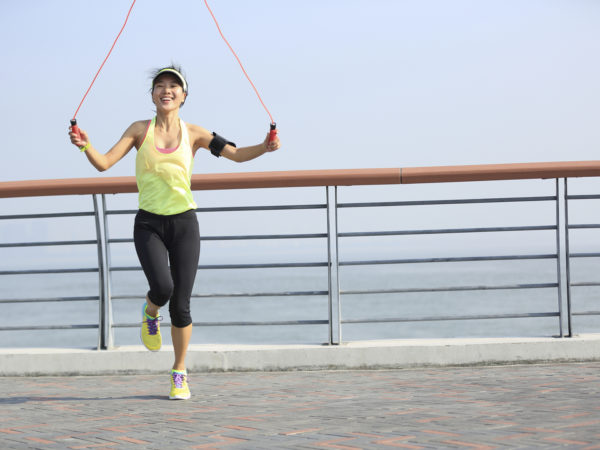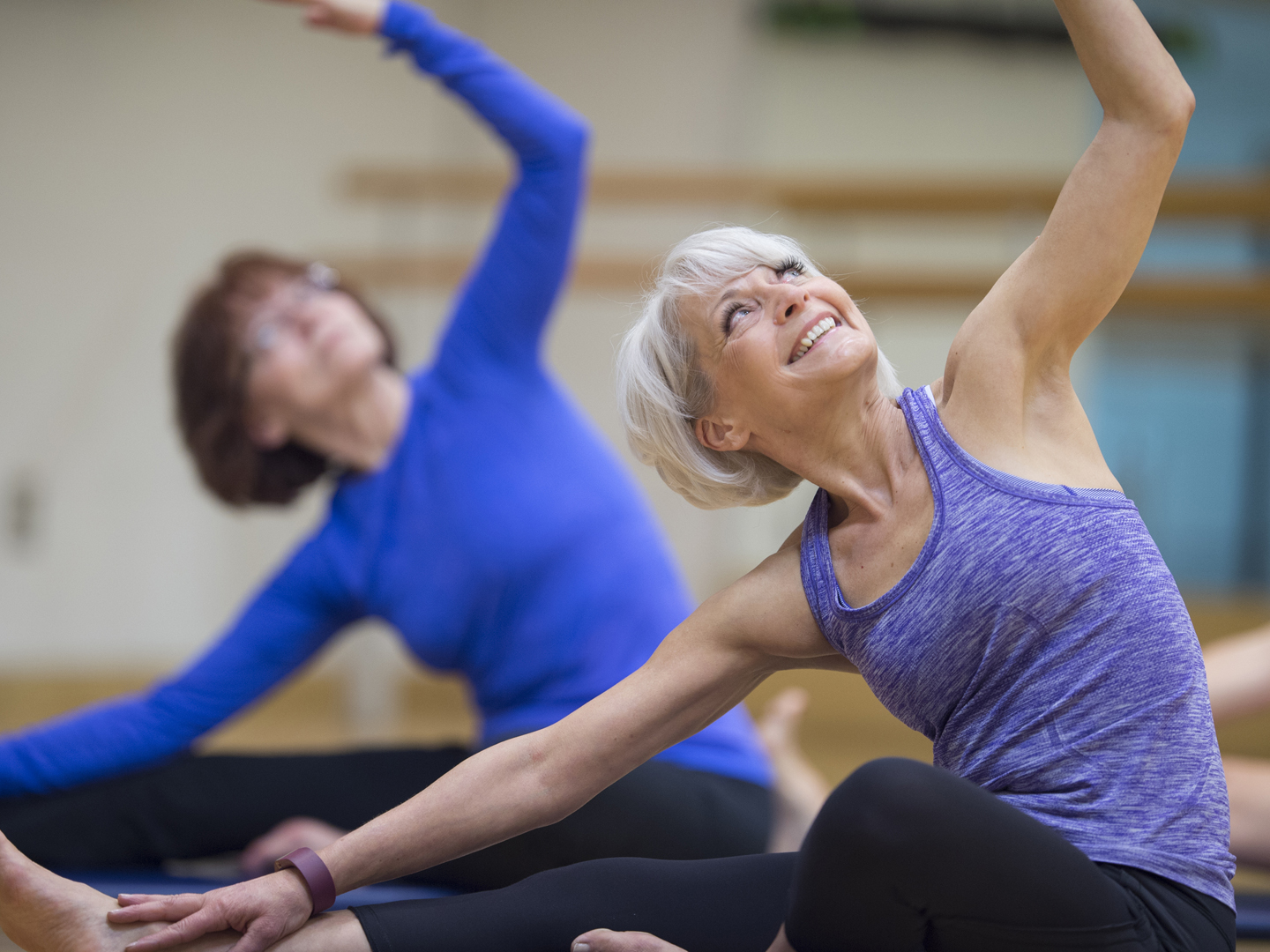Six Alternative Aerobic Activities

Running, walking and bicycling are the best known and most popular ways to get aerobic exercise, but they are far from the only ones. Try one or more of these for variety:
Rope jumping is another of my favorites. Although athletes have long used it as an efficient aerobic conditioning exercise, it is not nearly as popular as most of the activities I have listed here. It has several advantages, among them extreme portability. Jump ropes are inexpensive compared to other exercise equipment, and you can take them anywhere. I jump rope in hotel rooms and roadside rest areas when I am on the road, in my house and other people’s houses as well as outside. The rhythm of this activity, when you become proficient at it, is hypnotic in a way that makes time pass quickly and smoothly, offsetting the monotony. Rope jumping gives an excellent cardiovascular workout and uses both arm and leg muscles. It takes a bit of practice to master rope jumping. You want to be able to sustain a steady rhythm and use a smooth dance step (one foot at a time rather than both together) without lifting your feet very high. You will probably not want to jump rope continuously for thirty minutes, but you can intersperse it with other exercise routines.
Climbing stairs is surprisingly strenuous if you go up more than one flight at a time. If you are lucky enough to have stairs in your home, use them frequently. When possible, walk up stairs instead of taking elevators and escalators. One of the most demanding exercise machines is the stair climber. Look for it at fitness clubs and consider one for the home if you like it. Even using this machine at relatively slow speed, I am quickly drenched in sweat and obviously working hard during a thirty-minute climb. Skip this exercise if you are significantly overweight. It can be too much effort for your heart and can traumatize your joints. A newer version, the elliptical trainer, gives a much smoother workout that is easier on knees and adds arm motion. I have one of these machines in my home and use it regularly.
Cross-country skiing is rated as the best aerobic exercise by many fitness experts because it works more muscles than other activities and is very efficient at conditioning the cardiovascular system. Risk of damage to the body is low, and mastery of this sport can give you a great deal of pleasure. The disadvantages are obvious. You can do it on a regular basis only if you live in a suitable area, and then only seasonally. Most people have to learn how to ski, probably from an instructor. You have to buy and maintain the necessary equipment.Indoor cross-country ski machines are available at many health clubs and can be installed in the home. They are slightly harder to learn to use than stationary bikes but somewhat less boring and give a better workout.
Rowing has similar pluses and minuses. It’s great if you have the time, place, and equipment, but few of us can rely on it as our main aerobic activity. Rowing machines are another indoor option. I am more cautious about them than about the other machines because of the possibility of overstressing the back. This is more likely with some models than others and with overuse of arm and back muscles instead of reliance on leg muscles. Have an instructor supervise you when you learn to use a rowing machine and pay attention to any signs of unhappiness from your back.
Dancing is one of the best aerobic activities of all, in my opinion, often slighted by exercise physiologists. It is perhaps the most fun, a tonic for the mind and spirit as well as the body. If you don’t like rock music, try country swing, folk and ethnic dancing, or the old reliable, square dancing. In many areas you can find dancing classes, clubs, and societies that delight in teaching beginners. Dancing can give as thorough an aerobic workout as any of the activities mentioned so far, is never boring, and definitely promotes health. Some of the healthiest old people I see are those who dance regularly. Since dancing is usually a social activity, people are likely to forget that they can do it by themselves. Sometimes on bad-weather days I put on a favorite record or tape and get my aerobic workout by dancing around my living room, interspersing a few minutes of jumping rope, jumping on a mini-trampoline, and romping with my dogs. We all have a good time.
Aerobics classes are usually combinations of warmup stretches, aerobic movement, and muscle toning exercises done to music under the leadership of an instructor. If you are a member of a fitness club, you are familiar with these classes. Usually different levels are offered for beginner, intermediate, and advanced participants. Because aerobics classes are organized and structured, they are good for people who are not very motivated about exercise. Regular aerobics classes usually include jumping and running of a sort that may traumatize joints. For this reason some clubs now offer the option of “low-impact aerobics,” modified to avoid jarring. To my taste, aerobics classes are less fun than spontaneous, free-form dancing, but I recognize that they work well for many people. Be careful to start off at the level of difficulty you are comfortable with. If you have not been practicing this kind of activity, some of the more intense classes can leave you exhausted and with very sore muscles.
Read more of Dr. Weil’s exercise and fitness articles.















